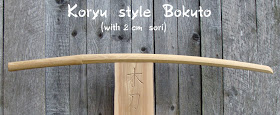Hello Buyu's,
I received a request to make Kukishinden ryu naginata, and
so I "fell"
to the stage built up Naginata's
I do not know how many I will make them, and in how many forms, it is a big issue. For now here are a few forms of the blade, soon it will be more.
I do not know how many I will make them, and in how many forms, it is a big issue. For now here are a few forms of the blade, soon it will be more.
Here it will be only pictures of blades,
because
the shape is what makes the difference, everything else, tsuba (size of tsuba), Ishizuki (shape of ishizuki), length of nagaye(handle), tachiuchi, is up to you.
I will also try to make my version of Tsukushi naginata (orTsukushi fukuro) for practice.









